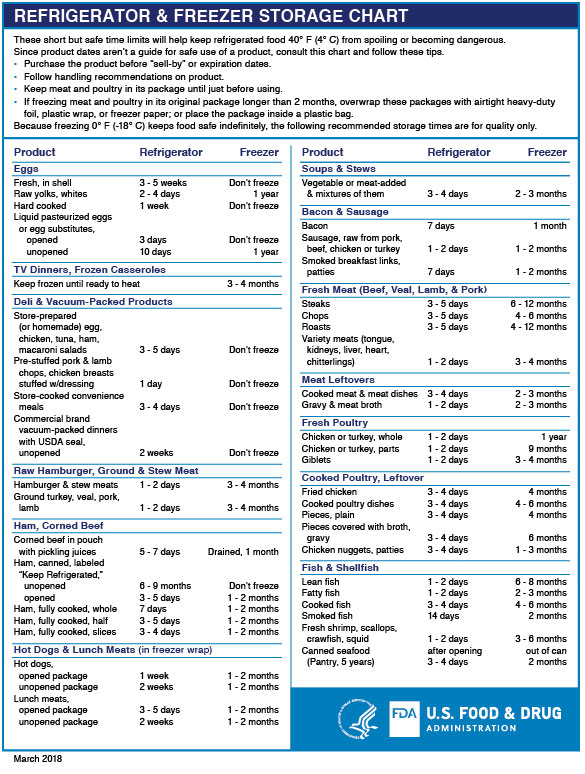
Image Credit: https://pixabay.com/photos/vegetables-basket-vegetable-basket-752153/
Delicious Alternatives for a Healthier You and Planet
Plant-based and sustainable diets have garnered attention not only for their health benefits but also for their positive impact on the environment. While the perception often exists that these diets are costly, with careful planning and smart choices, they can be both affordable and sustainable.
Environmental Benefits
Switching to a plant-based diet can significantly reduce your carbon footprint. The production of plant-based foods generally requires fewer resources—land, water, and energy—compared to animal-based products. For instance, producing a pound of beef requires approximately 1,800 gallons of water, while the same amount of tofu requires only 302 gallons. Moreover, livestock farming contributes to a substantial portion of greenhouse gas emissions, including methane, which is far more potent than carbon dioxide in terms of its impact on global warming.
Adopting a plant-based diet also supports biodiversity. Monoculture farming, often associated with animal feed production, can lead to soil degradation and loss of ecosystems. Plant-based diets, when sourced sustainably, promote crop diversity and healthier ecosystems.
Sourcing Strategies
One of the myths surrounding plant-based diets is that they are inherently expensive. However, strategic sourcing can make them affordable:
- Seasonal and Local Produce: Buying fruits and vegetables that are in season and sourced locally can reduce costs. Farmers’ markets often offer fresh, affordable produce, sometimes at lower prices than supermarkets.
- Bulk Purchases: Staples like grains, beans, lentils, and nuts can be purchased in bulk at reduced prices. Bulk buying also reduces packaging waste, aligning with sustainable practices.
- Community-Supported Agriculture (CSA): Participating in CSA programs can provide regular access to fresh produce at a fraction of the retail cost. These programs support local farmers and reduce the carbon footprint associated with transporting food over long distances.
- DIY Approach: Growing your own herbs, vegetables, and fruits, even in small spaces like balconies or window sills, can be a cost-effective way to supplement your diet with fresh produce.
Nutritional Benefits
Plant-based diets, when well-planned, can provide all the necessary nutrients for a healthy lifestyle. Key nutritional benefits include:
- High Fiber Content: Fruits, vegetables, whole grains, and legumes are rich in fiber, which aids digestion, helps maintain a healthy weight, and reduces the risk of chronic diseases like heart disease and type 2 diabetes.
- Vitamins and Minerals: Plant-based diets are abundant in essential vitamins and minerals. Leafy greens, for example, are high in vitamins A, C, and K, while nuts and seeds provide important minerals like magnesium and zinc.
- Healthy Fats: Nuts, seeds, avocados, and olive oil offer healthy fats that are beneficial for heart health and can help in the absorption of fat-soluble vitamins.
- Plant Proteins: Beans, lentils, chickpeas, tofu, and tempeh are excellent sources of protein, often with lower levels of saturated fats compared to animal proteins.
Practical Tips for an Affordable Plant-Based Diet
- Meal Planning: Plan your meals around what’s on sale and in season. This helps in creating a budget-friendly grocery list and reduces food waste.
- Cook at Home: Preparing meals at home is generally more economical than eating out. It also gives you control over ingredients and portion sizes, contributing to better health.
- Simple Recipes: Opt for simple, nutrient-dense recipes that require fewer ingredients and are easy to prepare. Dishes like vegetable stir-fries, lentil soups, and grain bowls can be both satisfying and cost-effective.
- Avoid Processed Foods: Processed plant-based foods can be expensive. Focus on whole foods like vegetables, grains, legumes, and fruits to keep costs down and ensure nutrient-rich meals.
30 Plant-Based Dishes That Taste Just As Good As Their Meat Varieties
- Vegetable Stir-Fry with Tofu
- Ingredients: Tofu, broccoli, bell peppers, carrots, soy sauce, garlic, ginger, sesame oil, green onions.
- Taste: Savory and umami-packed with a satisfying crunch from fresh vegetables.
- Chickpea Curry
- Ingredients: Chickpeas, coconut milk, tomatoes, onions, garlic, ginger, curry powder, spinach, cilantro.
- Taste: Rich and creamy with a blend of spices creating a warm, comforting flavor.
- Lentil Shepherd’s Pie
- Ingredients: Lentils, potatoes, carrots, peas, onions, garlic, vegetable broth, thyme, rosemary.
- Taste: Hearty and comforting with a savory filling and a creamy potato topping.
- Black Bean Burgers
- Ingredients: Black beans, oats, onions, garlic, cumin, chili powder, flaxseed, buns, lettuce, tomato.
- Taste: Smoky and robust with a satisfying texture that rivals traditional beef burgers.
- Mushroom Stroganoff
- Ingredients: Mushrooms, onions, garlic, vegetable broth, cashew cream, Dijon mustard, noodles, parsley.
- Taste: Creamy and rich with deep umami flavors from the mushrooms and a tangy finish from the mustard.
- Vegan Lasagna
- Ingredients: Lasagna noodles, marinara sauce, tofu ricotta, spinach, mushrooms, nutritional yeast, basil.
- Taste: Cheesy and satisfying with layers of rich marinara and savory tofu ricotta.
- Quinoa Stuffed Peppers
- Ingredients: Bell peppers, quinoa, black beans, corn, tomatoes, onions, cumin, chili powder, cilantro.
- Taste: Flavorful and vibrant with a mix of textures and a hint of spice.
- Eggplant Parmesan
- Ingredients: Eggplant, marinara sauce, vegan mozzarella, breadcrumbs, flour, basil, oregano.
- Taste: Crispy and cheesy with a rich tomato sauce that complements the tender eggplant.
- Vegan Tacos
- Ingredients: Black beans, corn, avocado, tomatoes, onions, cilantro, lime, tortillas, chili powder, cumin.
- Taste: Fresh and zesty with a mix of creamy avocado and spicy black beans.
- Sweet Potato and Black Bean Chili
- Ingredients: Sweet potatoes, black beans, tomatoes, onions, garlic, chili powder, cumin, vegetable broth.
- Taste: Spicy and hearty with a slight sweetness from the sweet potatoes.
- Falafel Wraps
- Ingredients: Chickpeas, onions, garlic, parsley, cumin, coriander, flour, pita bread, lettuce, tahini sauce.
- Taste: Crunchy and flavorful with aromatic spices and a creamy tahini sauce.
- Spaghetti with Lentil Bolognese
- Ingredients: Lentils, tomatoes, onions, garlic, carrots, celery, red wine, basil, oregano, spaghetti.
- Taste: Rich and hearty with a robust tomato sauce and protein-packed lentils.
- Thai Peanut Noodles
- Ingredients: Rice noodles, tofu, peanut butter, soy sauce, lime, garlic, ginger, carrots, bell peppers, cilantro.
- Taste: Creamy and nutty with a hint of sweetness and spice.
- Cauliflower Buffalo Wings
- Ingredients: Cauliflower, flour, water, garlic powder, hot sauce, vegan butter, celery, vegan ranch.
- Taste: Spicy and tangy with a crispy exterior and tender interior.
- Vegan Sushi Rolls
- Ingredients: Sushi rice, nori sheets, avocado, cucumber, carrots, tofu, soy sauce, wasabi, pickled ginger.
- Taste: Fresh and light with a mix of creamy avocado and crunchy vegetables.
- Chana Masala
- Ingredients: Chickpeas, tomatoes, onions, garlic, ginger, cumin, coriander, turmeric, garam masala, cilantro.
- Taste: Spicy and aromatic with a rich, tomato-based sauce and tender chickpeas.
- Vegetable Paella
- Ingredients: Arborio rice, bell peppers, peas, tomatoes, onions, garlic, saffron, vegetable broth, parsley.
- Taste: Savory and fragrant with a vibrant mix of vegetables and a hint of saffron.
- Portobello Mushroom Burgers
- Ingredients: Portobello mushrooms, balsamic vinegar, soy sauce, garlic, buns, lettuce, tomato, vegan mayo.
- Taste: Meaty and juicy with a deep, savory flavor from the marinated mushrooms.
- Tofu Scramble
- Ingredients: Tofu, turmeric, nutritional yeast, onions, bell peppers, spinach, garlic, black salt.
- Taste: Savory and flavorful with a texture similar to scrambled eggs and a slight sulfuric taste from black salt.
- Stuffed Acorn Squash
- Ingredients: Acorn squash, quinoa, cranberries, pecans, onions, garlic, sage, vegetable broth.
- Taste: Sweet and savory with a festive blend of cranberries and pecans.
- Vegan Pad Thai
- Ingredients: Rice noodles, tofu, tamarind paste, soy sauce, lime, peanuts, bean sprouts, garlic, green onions.
- Taste: Tangy and savory with a balance of sweet and sour flavors and a crunch from peanuts and bean sprouts.
- Jackfruit Pulled ‘Pork’ Sandwiches
- Ingredients: Jackfruit, BBQ sauce, onions, garlic, buns, coleslaw, pickles.
- Taste: Smoky and tangy with a texture remarkably similar to pulled pork.
- Vegan Pho
- Ingredients: Rice noodles, vegetable broth, star anise, cloves, cinnamon, ginger, garlic, tofu, bean sprouts, basil, lime.
- Taste: Aromatic and comforting with a deeply flavorful broth and fresh herbs.
- Vegetable Samosas
- Ingredients: Potatoes, peas, carrots, onions, garlic, ginger, cumin, coriander, phyllo dough, vegetable oil.
- Taste: Spicy and crispy with a savory potato and pea filling.
- Vegan Jambalaya
- Ingredients: Rice, tomatoes, bell peppers, celery, onions, garlic, kidney beans, cajun seasoning, vegetable broth.
- Taste: Spicy and hearty with a medley of vegetables and a rich, tomato-based sauce.
- Seitan ‘Chicken’ Alfredo
- Ingredients: Seitan, fettuccine, cashew cream, garlic, nutritional yeast, lemon juice, parsley.
- Taste: Rich and creamy with a satisfying, meaty texture from the seitan.
- Zucchini Noodles with Pesto
- Ingredients: Zucchini, basil, pine nuts, garlic, lemon juice, nutritional yeast, olive oil.
- Taste: Fresh and vibrant with a creamy, nutty pesto sauce.
- Vegetable Pot Pie
- Ingredients: Carrots, peas, potatoes, onions, garlic, vegetable broth, flour, almond milk, puff pastry.
- Taste: Comforting and creamy with a flaky crust and a rich vegetable filling.
- Vegan Enchiladas
- Ingredients: Corn tortillas, black beans, corn, onions, garlic, enchilada sauce, vegan cheese, cilantro.
- Taste: Spicy and cheesy with a robust, savory filling and a tangy enchilada sauce.
- Crispy Chickpea Salad
- Ingredients: Chickpeas, lettuce, tomatoes, cucumbers, red onions, olives, lemon juice, olive oil, garlic, paprika.
- Taste: Fresh and crunchy with a mix of vibrant vegetables and crispy, spiced chickpeas.
Each of these dishes showcases how plant-based meals can be just as flavorful, satisfying, and versatile as their meat-based counterparts, proving that you don’t have to sacrifice taste or nutrition to embrace a sustainable diet.
Conclusion
Adopting a plant-based and sustainable diet doesn’t have to break the bank. With thoughtful sourcing, strategic shopping, and careful meal planning, it’s possible to enjoy the numerous health benefits of a plant-based diet while also contributing positively to the environment. Embracing this lifestyle can lead to better health outcomes, a reduced carbon footprint, and a more sustainable food system.


























